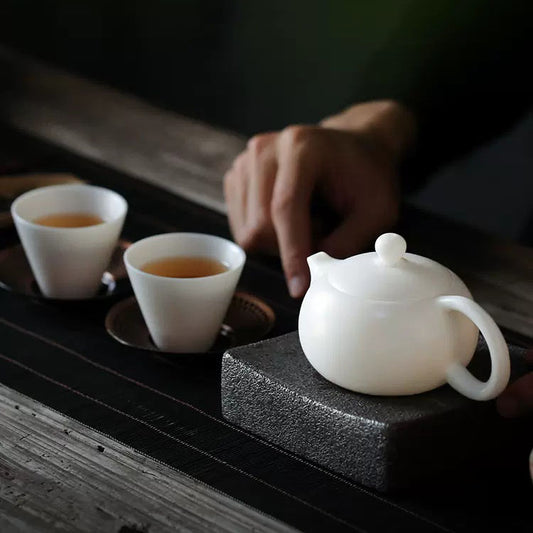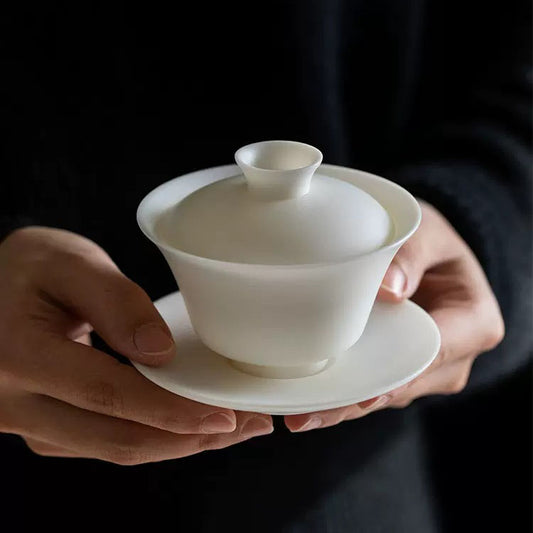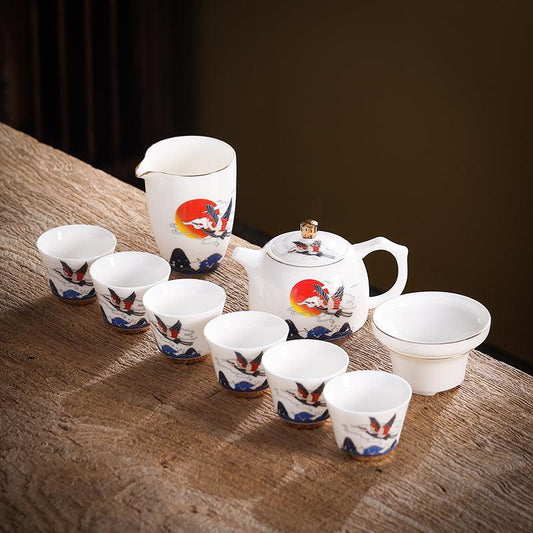
Also known as "Sancai Bowl" or "Sancai Cup," Gaiwan symbolizes the harmony between heaven, earth, and mankind. The lid represents heaven, the saucer represents earth, and the bowl represents humanity, representing the connection and harmony between the three. When tasting tea, the lid, saucer, and bowl should not be used separately, which is both a matter of etiquette and aesthetics.
Legend has it that Gaiwan was invented by the daughter of Cui Ning, a military governor of Xichuan during the Tang Dynasty. At that time, tea cups did not have a base and were very hot to the touch. To make it more convenient to drink tea, Cui Ning's daughter came up with the idea of using a wooden tray to hold the tea cup. However, the wooden tray was very slippery, so she used wax to ring a circle in the center of the wooden tray, making the cup more stable. This was the earliest tea boat and the original form of Gaiwan.

In the early days, Gaiwan was used for personal use, and brewing and drinking tea were combined into one. At this time, Gaiwan was like a cup, very convenient to carry and use.
Today, Gaiwan is used more as a teapot. Using Gaiwan to brew tea makes it easier to observe the color of the tea soup and control the concentration. You can also directly appreciate the tea leaves after brewing, and cleaning is also more convenient. Therefore, Gaiwan has evolved into a unique brewing vessel, often used in combination with tea cups or tea bowls, forming a new set of tea utensils.
In addition to its practical value, Gaiwan also carries rich cultural and artistic values. In Chinese culture, tea is not only a beverage but also a way of life and spiritual pursuit. As a representative of tea utensils, Gaiwan embodies the Chinese people's awe and respect for life and nature and is an important part of Chinese tea culture.
In modern society, tea culture is still an important component of Chinese culture, and Gaiwan has become an important symbol of it. Many tea lovers collect Gaiwan, appreciate its beautiful appearance and exquisite craftsmanship. Gaiwan has become an eternal work of art, representing the history and future of Chinese tea culture.

In conclusion, as one of the representatives of traditional Chinese tea utensils, Gaiwan has a rich history and cultural connotation. It is not only a practical tea utensil but also a cultural symbol, representing the harmonious relationship between heaven, earth, and mankind. Gaiwan will continue to be cherished and praised by tea lovers and become an important component of Chinese tea culture.





